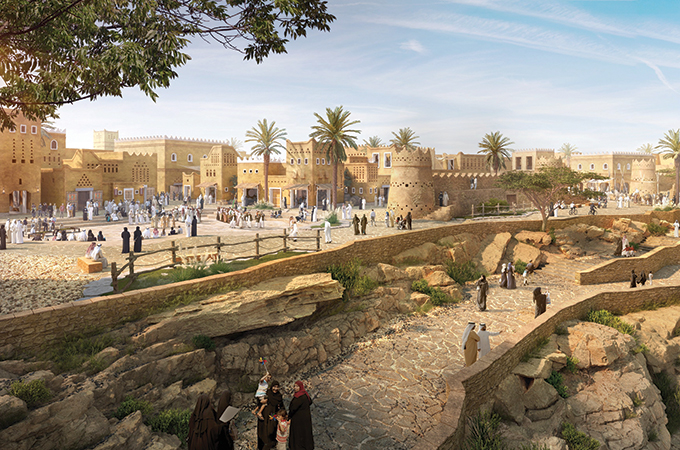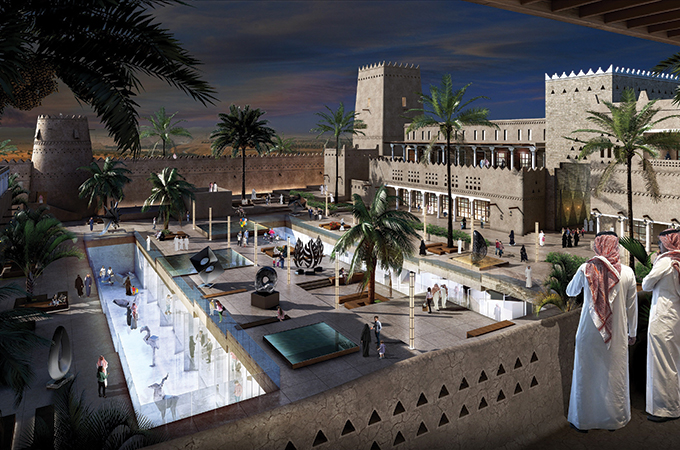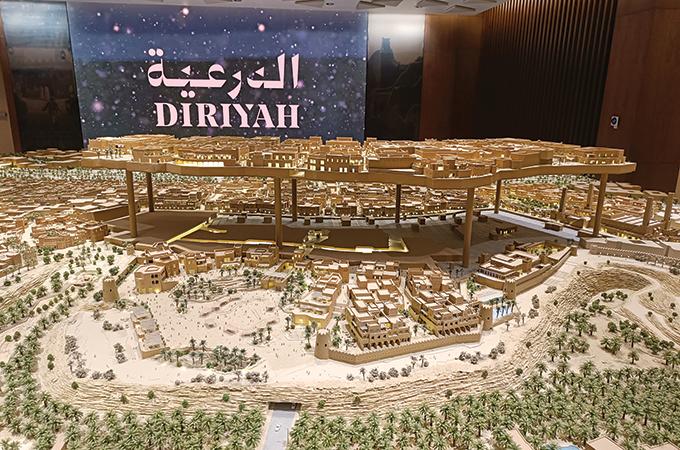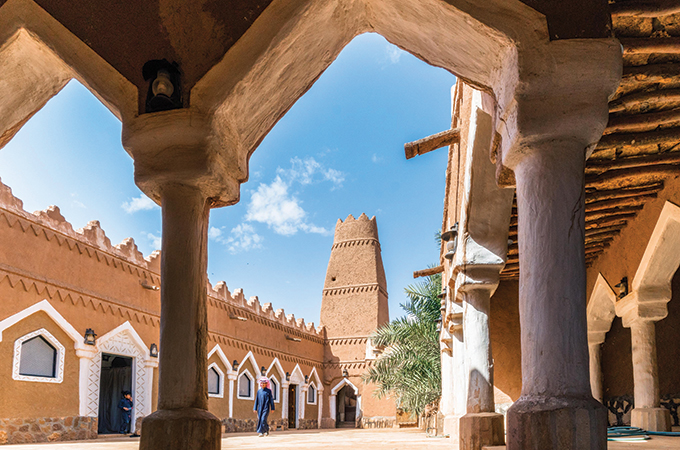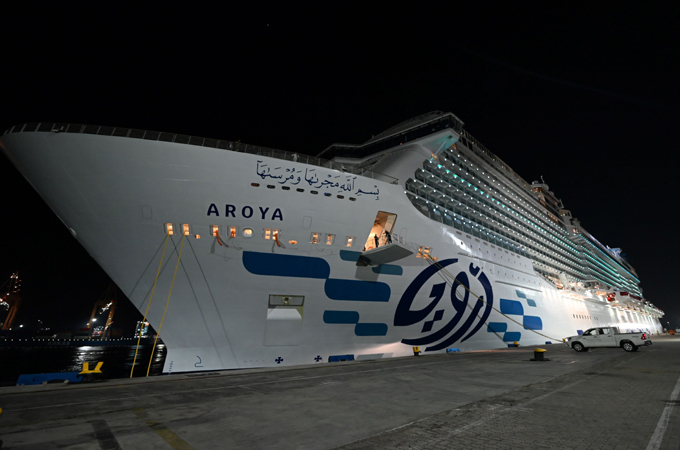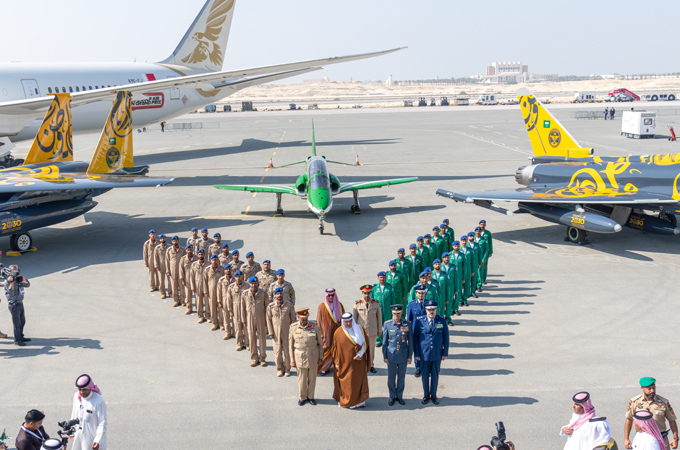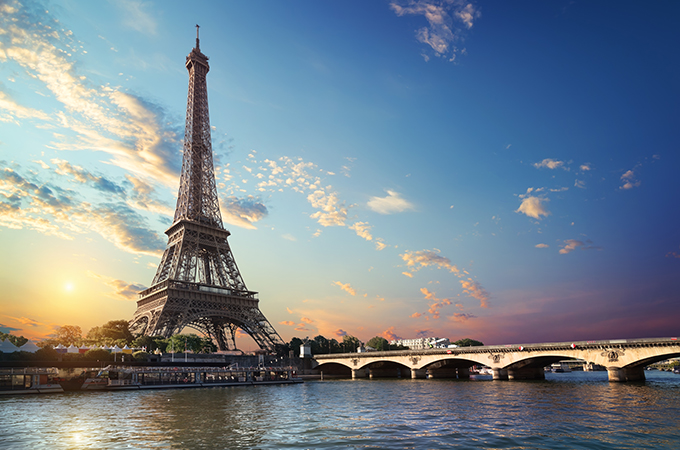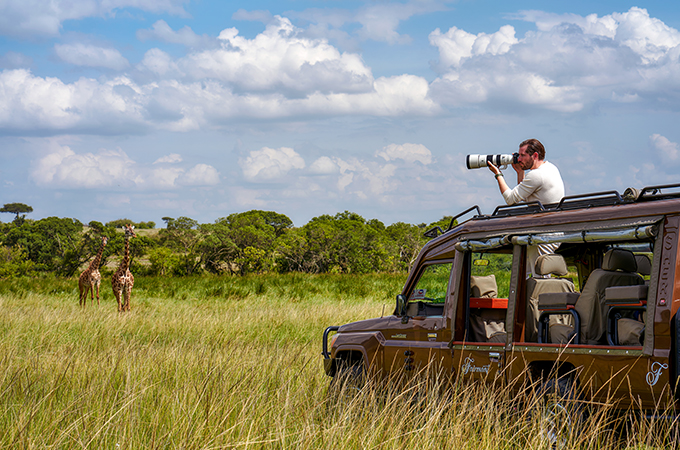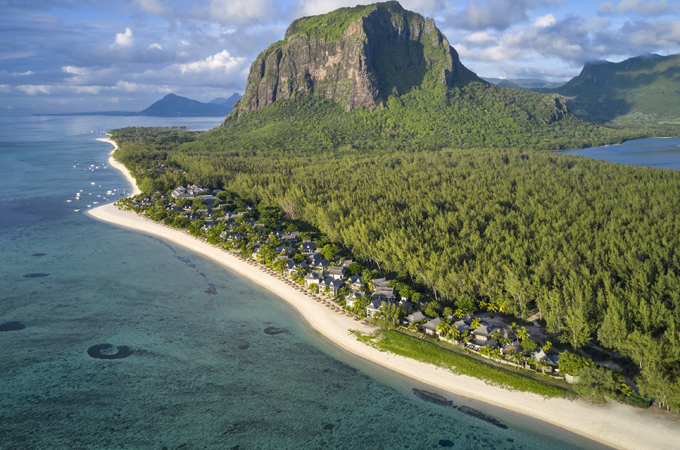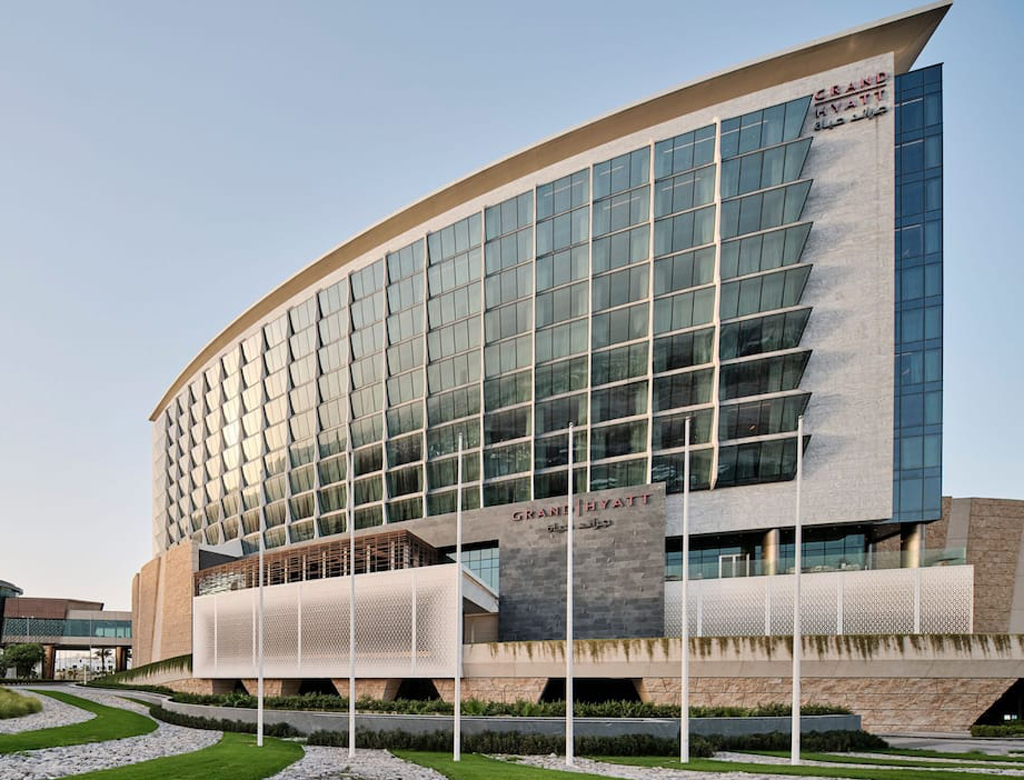Autumn 2022
An ambitious $50.6-billion redevelopment programme aims to create a destination that will restore, preserve and celebrate Diriyah as the beating cultural heart of Saudi Arabia, writes Bina Goveas, who recently toured the historic city.
Saudi Arabia has been opening up, and opening up in a big way, to tourists since 2019, transforming itself to offer some of the world’s best sites and venues sought by tourists, thrill seekers, art lovers and cultural buffs.
As the kingdom unveils sites that showcase its rich heritage and history that goes back to thousands of years with structures and museums to prove it, and mega and giga projects that are mind-blogging to say the least, a wonderstruck world is getting ready to add the kingdom to its bucket list.
One such site – situated in the beating heart of the kingdom – is Diriyah, the ancestral home of the House of Al Saud and birthplace of modern of Saudi Arabia. This “well-kept secret” that is steeped in history and heritage is now poised to become an iconic destination that will take visitors back three centuries, thus offering a unique value proposition in the region for tourists. It is recognised as a symbolic centre of inspiration for the generations of leaders that have led the kingdom since the foundation of the first Saudi Arabian state in 1744.
An ambitious $50.6-billion redevelopment programme has been launched to create a destination that will restore, preserve and celebrate Diriyah as the beating cultural heart of Saudi Arabia. About 30 million annual visitors are expected to flock to Destination Diriyah once the project is complete.
Arabian Knight, together with a select number of publications, was recently given a tour of Diriyah and gain an insight into what it will look like in the next few years.
Diriyah Gate Development Authority (DGDA) is overseeing all cultural, heritage and historical initiatives geared towards telling the story of Diriyah to the world, as well as all design, development and delivery aspects aimed at bringing the project to life.
DGDA aspires to develop Diriyah into a global gathering place by creating rich experiences that narrate the stories of Saudi Arabia’s history, instilling a sense of national pride and creating globally renowned destinations and landmarks.
“DGDA’s mandate and focus is not only aimed at improving the quality of life for citizens, residents, and visitors today and in the future, but also at preserving the history, heritage and culture of Diriyah,” says Jerry Inzerillo, Group CEO of DGDA.
The 7-sq-km Diriyah district, located some 15 minutes northwest of the centre of Riyadh, is being transformed into one of the world’s foremost historic tourism destinations with cultural and lifestyle experiences at its heart, enriched by entertainment, shopping, dining, hospitality, residential and workplace offerings.
Designed to become one of the Middle East’s most walkable, pedestrianised cities, Diriyah aims to honour the heritage of the area with traditional Najdi architectural design principles, including low-rise, compact and organic architecture, rooftop terraces, decorated doors, and large courtyards. When completed, it is expected to host Saudi Arabia’s choice collection of museums and cultural attractions, international hotels and resorts, and luxury retail, leisure and dining experiences.
While reflecting the Najdi architectural typology and urban planning of 300 years ago, the district will be carefully adapted and developed for 21st century living – from the meandering urban self-shaded pedestrian-focused streetscapes to the beautiful natural landscape of Wadi Hanifah, incorporating cycle tracks, horse bridle paths and natural gathering places for the people of Riyadh.
The redevelopment programme covers Diriyah Gate, Wadi Safar, Wadi Hanifah and At-Turaif. It has been divided into two phases – with Phase One expected to include 38 hotels, a diverse collection of museums and cultural institutes, 223,000 sq m of lifestyle, retail and food and beverage (F&B) units and 1,280-plus residential units.
Diriyah is poised to launch two key anchoring components this year, making it the first giga-project in the kingdom to open assets to the public.
These include the historic At-Turaif district – a Unesco World Heritage Site, which has been restored to its former glory and enhanced with a collection of museums – and Bujairi Terrace, a dining destination built in a traditional Najdi architectural style that hosts a collection of the world’s premium F&B brands.
At-Turaif, founded in the 15th century, is a unique jewel from the Saudi past. It was here that Diriyah’s ruling family lived under the leadership of Imam Mohammad bin Saud, the forefather of Saudi Arabia’s current King, the Custodian of the Two Holy Mosques King Salman bin Abdulaziz Al Saud.
Bujairi Terrace is expected to open shortly with a total of 16 F&B outlets – including four Michelin-starred restaurants – a number that will eventually rise to more than 20. Many of these brands will be making their debut in the kingdom and the region and have been meticulously curated to cater for both the local and international markets.
The dining destination will also include two Saudi concepts – Takya and Maiz – which will help complete the authentic Saudi experience for international tourists.
The four Michelin-starred restaurants are Bruno, Tatel, Hakkasan and Long Chim.
Architecturally, all these low-rise structures are built with a Najdi mudbrick-style look and feel in keeping with the heritage of Diriyah but with an air-conditioned indoor environment that has been fashioned in modern décor that complements the exterior. The dining hub will include a mix of casual to high-end dining facilities, as well as cafes and a food hall with different types of concepts. The outdoor area will include several pop-ups and an outdoor cinema at a later stage.
The majestic setting of Bujairi Terrace overlooks At-Turaif and Wadi Hanifah – an oasis around which the Diriyah of old initially took shape – and is accessed via three entry points.
Wadi Hanifah covers a 2.5-million-sq-m area of lush palm groves and historic farmlands. It is accessible from the escarpment walk, which provides views of At-Turaif, and offers passive and active recreational spaces and boutique hospitality venues; and places to unwind and spend time with family and friends in the beautiful wadi surroundings.
The wadi will provide a rural parkland component to complement the new urban district of Diriyah Gate and create a ‘green spine’ for the residents of Riyadh.
“The Diriyah development is definitely going to change the construct of the capital city, Riyadh, where the population will surge up from 7.5 million to 15 million as envisaged in the 2030 Vision,” says Kiran Haslam, Chief Marketing Officer of DGDA.
“This is an area which is all about going out with the family in a pedestrian zone and having access to some great restaurants and great experiences, great programming entertainment as well as a tourist area overlooking the Wadi Hanifah. Being a pedestrian district, it will offer truly deeply meaningful and immersive experiences while on foot,” he adds.
The cultural hub of the development is Diriyah Square, a mixed-use destination with lifestyle retail, luxury residential, ultra-luxury hotels and resorts, entertainment spaces, unique culinary offerings, and dedicated office spaces and co-working spaces for creatives and professionals. This luxury destination will host more than 400 iconic brands as well as traditional artisan souks and bazaars, all set within an authentic, walkable Najdi village atmosphere, providing a new lifestyle experience unique to Diriyah.
Visitors with a penchant for history and culture have a choice of museums in Diriyah, all set in the Najdi vernacular architecture. Some of the major museums that are ready to receive visitors include the Salwa Palace and Diriyah Gallery. The residence of three past Al-Saud rulers, Salwa Palace and its gallery houses a wide collection of manuscripts, coins, clothing and royal stamps from the 18th century, telling the story of the First Saudi State.
Another impressive museum is the Arabian Horse Gallery, which celebrates the grace and strength of the formidable Arabian horse while highlighting the importance of this breed in Saudi culture and history.
Other key aspects of the Diriyah masterplan are King Salman Square, a striking plaza which can accommodate up to 18,000 people; the House of Al Saud in the south, a flagship museum covering 43,000 to 45,000 sq m, the concept designs of which have been completed; the Grand Mosque, which can accommodate more than 14,000 worshippers in its open plaza; Raffles-branded residential offerings; and a historical ‘Period Village’.
Phase One of the development will include 38 luxury and uber-luxury hotels offering close to 2,300 luxury hotel rooms. Having already signed up with 14 hotel operators earlier this year – including renowned names such as Armani, Four Seasons, Rosewood and Six Senses – the DGDA is poised to announce two more operators imminently, while negotiations are on with 17 others, according to Imran Changezi, Hospitality Director, DGDA.
Most of the 16 hotels that have been signed up are boutique, fashion or the ultra-luxury brands with a limited number of keys – around eight of them will have only up to 100 keys. The largest hotel will be operated by Rosewood and will have 250 keys, he says.
According to Changezi, as per HRH Prince Mohammed bin Salman’s guidelines, the architectural vision of the hotels will follow Najdi design principles. While this sets the tone for the architectural design, interior design is being developed with the brand in line with its standards and while the brands have creative freedom in interior design, the DGDA ensures that it is in line with the masterplan.
The first hotel is scheduled to open by the end of next year. “This will be the Bab Samhan, a Luxury Collection Hotel’ (previously known as Samhan Heritage hotel) operated by the Luxury Collection by Marriott in the Samhan district, which is currently under construction,” he states.
Changezi firmly believes in the tourism potential of Saudi Arabia.
Commenting on this potential, he says: “Saudi Arabia has an existing thriving domestic market of 35 million people in a country that is rich in resources. It has the ambition, the funds, and the will of the leadership. People seeking experiential travel are keen and very intrigued about Saudi Arabia because this market has not been open for tourism. If you look at the region, this is the last unexplored frontier. So, for the experiential traveller who’s looking at tracing centuries and centuries of history and artifacts, we believe it has an unbelievable potential.”
Saudi Arabia has also made it easy for tourists to enter the kingdom with nine nationalities allowed to get a visa upon arrival.
Changezi also believes Saudi Arabia has the potential of being a year-round destination given its diverse topographies, right from the island and coast resorts of the Red Sea, to the historical destinations of Al Ula and to the summer destinations of Abha and Jizan that boast pleasant weather.



